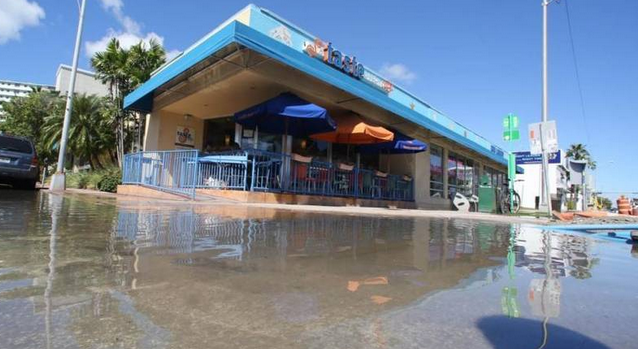for the Miami Herald
[dropcap]A[/dropcap]t high tide, flood gates installed decades ago on some South Florida canals no longer work. Saltwater is slowly killing freshwater marshes at the tip of the state. And after a recent king tide, one Key Largo neighborhood sat under a foot of water for three weeks.
It’s hard to avoid the doom and gloom of climate change.
But at the annual meeting of the Southeast Florida Regional Climate Compact in Key West this week, local, state and federal officials offered some rare good news.
Around the region, they said, advances are being made in the war on rising seas, and not just in Miami Beach where pumps have drawn national attention.
In Fort Lauderdale, sea walls are being built higher. Palm Beach County teamed up with Lake Worth to replace a crumbling sea wall protecting a municipal golf course with a “living shoreline” inhabited by wildlife. And in Miami-Dade County, new wastewater facilities are being built up to 17 feet higher to fend off sea rise and storm surge.
“We’re thinking in the box, out of the box and all around the box,” said Monroe County sustainability chief Rhonda Haag.
The conference, which coincides with international climate talks that started this week in Paris, gave local officials, scientists and activists a chance to catch up on progress made over the last year. And while they mostly agreed they’ve moved beyond arguing about the validity of climate science, they now find themselves battling gridlock over how to take action.
“We’ve done a lot of work in terms of identifying problems,” said Monroe County Mayor Heather Carruthers. “Now we need a framework for decisions.”
Many agreed that making progress locally is doable. In addition to its higher seawalls, Fort Lauderdale designated 16 vulnerable areas and is working to make them more resilient through a new state law that provides additional money. So far, they have come up with 38 projects, said assistant public works director Nancy Gassman.







